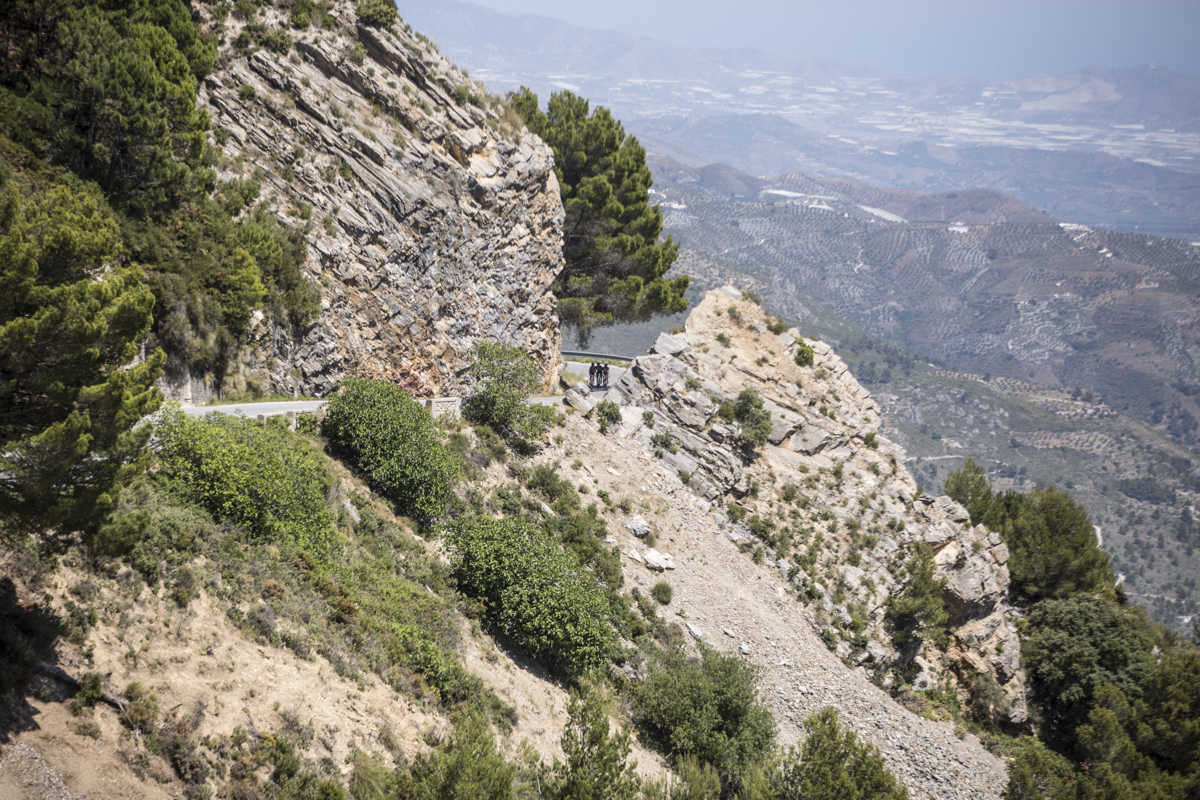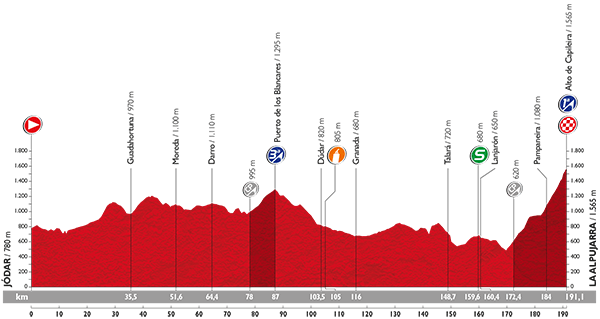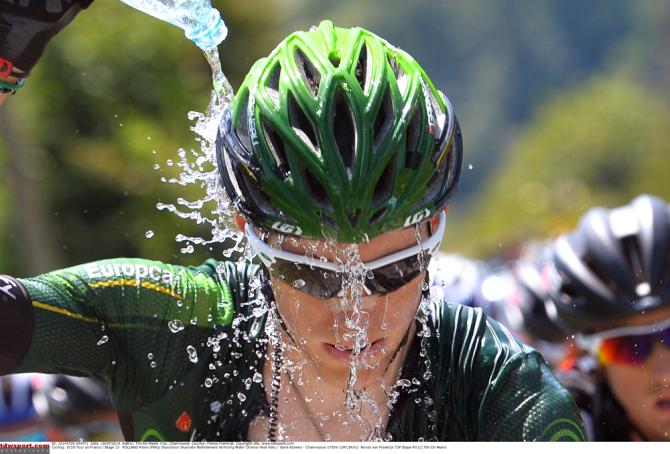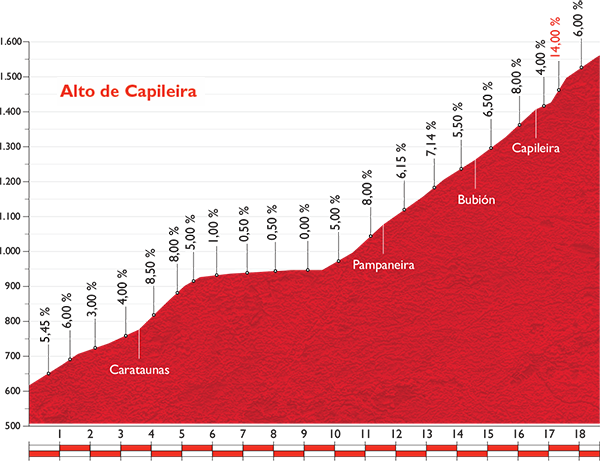Vuelta a Espana: sparks set to fly on the Alto de Capileira
All you need to know about the Vuelta's new summit finish



The Vuelta a España’s fourth summit finish on stage 7 on Friday is the first big opportunity for the sparks to fly amongst the general classification contenders in the race.
So far the Vuelta’s final climbs, at El Caminito del Rey, Vejer and Cazorla, have been too short to permit more than skirmishing and the differences between most of the big contenders have been measured in seconds rather than minutes. But the Alto de Capileira climb, coming at the end of a long stage with nearly 3,000 metres of vertical climbing, is another story altogether and is likely to see the first all-out offensives amongst the top names.
Rated first category, the Alto de Capileira has never featured before in the Vuelta’s history and is found in a part of Spain rarely visited by the race – the southern side of the Sierra Nevada mountain range known as the Alpujarras. A popular tourist area and also home to a large number of non-Spaniards seeking ‘alternative’ lifestyles, the Alpujarras’ main broad valley is dotted with tiny whitewashed houses and villages that cling to impossibly steep-sided slopes. The townships are connected by narrow, perpetually switchbacking mountain roads that wriggle their way up along the Sierra Nevada’s southern flanks past vast patches of higo chumbos – a local wild fruit that looks like a cactus – and the odd herd of nimble footed mountain goats.
Capileira’s key challenge is its length rather than its steepness. Nearly 19 kilometres long, with an average gradient of five per cent, it is a real grind of an ascent with 945 metres of vertical climbing on dusty, but well surfaced roads.
The first part of the 191 kilometre stage, due south from Jodar and through Granada to the foot of the climb, is undulating rather than overly difficult. Some descents, such as that after the third-category climb of Blancares at kilometre 87 – the only other classified climb of the day – are twisting and dangerous. But the most likely scenario is that the peloton will reach the foot of the Alto de Capileira with almost all the top riders present and ready to swing into action.
“It’s not a climb where we’ll see who’s going to win the Vuelta, but for sure we’ll find out who’s not going to win it,” Cannondale-Garmin’s sports director Johnny Weltz tells Cyclingnews.
“On top of that, the heat is going to be really serious, and that’ll probably do as much damage as the climb itself.”
Get The Leadout Newsletter
The latest race content, interviews, features, reviews and expert buying guides, direct to your inbox!
A climb in two parts, with constant switchbacks, dusty roads and blazing sunshine

The first part of the 18.7-kilometre climb, starting just after the rural town of Orgiva – the Alpujarras ‘capital’ – is relatively gentle, with a gradient of around five per cent. There is a brief segment of eight per cent immediately before a much easier section that winds its way around the mountainside and which will allow most of the riders in difficulty on the first section to return to the pack.
For around five kilometres, during this break in the climbing, the peloton move along nearly-flat, well surfaced roads high above the valley floor, prior to taking a left turn onto a series of hairpin bends towards the main part of the ascent.
On this second rising segment on the Capiliera, the road up is a steady haul rather than steep, mostly running at between seven and eight per cent. What makes the climbing much harder are the constant switchbacks, the vertigo-inducing long drop on the right-hand side of the road above the valley, and, with little shelter, the exposure to what is forecast to be blazing sunshine on open, dusty, relentlessly climbing roads.
The route then passes close by to Pampaneira, before swinging left off a wider road past one campsite after another, a series of high stone walls, and on through the centre of Bubion and finally Capileira – all three tiny whitewashed villages with permanent populations of between 300 and 400 inhabitants which are flooded with tourists in the summer period.
The Vuelta itself takes the almost constantly twisting road connecting each of the villages, with a sharp right in Capileira guiding what is left of the peloton – by this point probably down to a couple of dozen riders at most – on up towards the final summit. With a little under two kilometres to go, a drop in gradient precedes a sudden, sharply rising ‘ramp’ of 14 percent. Although quite short, after such a long climb this will surely do some damage and could see final attacks go clear.
The final 500 metres will hold another surprise for the riders who have not seen videos of the climb; the road surface is perhaps best described as ‘semi-surfaced’, with some tarmac and some packed earth segments leading to the finishing gantry.
What will probably do the most damage, though, is the hot weather. Temperatures of over 40 degrees on stage six are expected to be repeated on stage seven and, combined with the climbing challenges, the Alto de Capileira could prove a memorably tough experience for the Vuelta riders.
Alasdair Fotheringham has been reporting on cycling since 1991. He has covered every Tour de France since 1992 bar one, as well as numerous other bike races of all shapes and sizes, ranging from the Olympic Games in 2008 to the now sadly defunct Subida a Urkiola hill climb in Spain. As well as working for Cyclingnews, he has also written for The Independent, The Guardian, ProCycling, The Express and Reuters.
